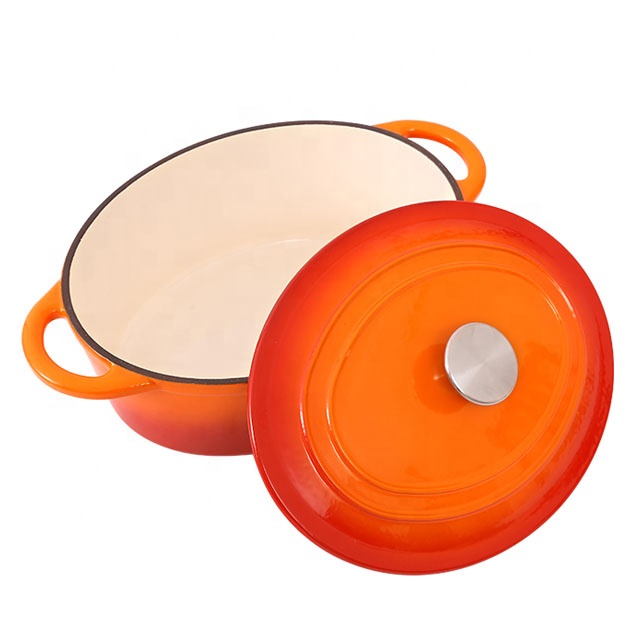
Effective Techniques for Maintaining Your Cast Iron Dutch Oven Clean and Rust-Free
Cleaning Your Cast Iron Dutch Oven A Comprehensive Guide
Cast iron Dutch ovens are a beloved staple in many kitchens due to their durability, excellent heat retention, and versatility. However, taking care of these legendary cookware pieces is crucial for maintaining their performance and longevity. Cleaning a cast iron Dutch oven properly can help preserve its seasoning, which is vital for non-stick properties and flavor retention. Below, we outline an effective and straightforward method for cleaning your cast iron Dutch oven.
Why is Cleaning Important?
Cleaning a cast iron Dutch oven correctly prevents rust and removes food residue while maintaining the seasoning, which is a layer of polymerized oil that gives cast iron its non-stick surface. Proper care ensures that your Dutch oven remains functional and aesthetically pleasing.
What You’ll Need
Before beginning the cleaning process, gather the following items - Warm water - A soft sponge or dishcloth - Non-abrasive scrub brush or chainmail scrubber - Kosher salt (optional) - Vegetable oil or flaxseed oil (for re-seasoning if necessary)
Cleaning Steps
1. Cool Down Always allow your Dutch oven to cool down after cooking before you start cleaning it. Rapid temperature changes can lead to cracking or warping.
2. Rinse with Warm Water Begin by rinsing the Dutch oven with warm water. Avoid soaking it in water, as prolonged exposure can damage the seasoning.
3. Scrub Gently Use a soft sponge or a non-abrasive scrub brush to remove any stubborn bits of food stuck to the pan. If food stubbornly clings, you can sprinkle some kosher salt in the pot and use the sponge to scrub. The salt acts as a gentle abrasive, helping to dislodge any residues without harming the seasoning layer.
4. For Stuck-on Residue If residues are particularly stubborn, consider boiling a bit of water in the Dutch oven for a few minutes. This can help soften the stuck particles, making them easier to wipe away. Always take care not to let it boil dry.
cast iron dutch oven cleaning

5. Dry Immediately After cleaning, dry the Dutch oven immediately with a soft cloth or place it on low heat on the stove for a few minutes to evaporate any remaining moisture. This step is crucial in preventing rust.
Re-Seasoning Your Dutch Oven
If you notice that the seasoning of your cast iron Dutch oven is dull or has been compromised, it may be time to re-season it. Here’s how to do it
1. Apply Oil Once the pot is clean and dry, apply a thin layer of vegetable or flaxseed oil to the inside of the pot. Make sure to cover all surfaces, including the lid.
2. Heat The Oven Preheat your oven to 375°F (190°C). Place the Dutch oven upside down on the middle rack and put a baking sheet on the bottom rack to catch any drips. Bake for about an hour.
3. Cool Down After an hour, turn off the oven and let the Dutch oven cool inside the oven to allow the seasoning to set.
Additional Tips
- Avoid Soap Traditional advice suggests avoiding soap altogether, as it can strip the seasoning. However, using a mild soap occasionally will not ruin a well-seasoned Dutch oven. - Store Properly Store your Dutch oven in a dry place, and consider placing a paper towel inside to absorb moisture and prevent rust.
- Regular Maintenance A little regular maintenance goes a long way. By cleaning your Dutch oven properly after each use, you can keep it in excellent condition for years to come.
In conclusion, cleaning your cast iron Dutch oven doesn’t need to be a complex process. With a bit of care and regular maintenance, you can keep this cherished kitchen tool functional and thriving for generations. Happy cooking!
-
Season Cast Iron Perfectly with GPT-4 Turbo TipsNewsAug.01,2025
-
High Quality Cast Iron Cookware - Baixiang County Zhongda MachineryNewsAug.01,2025
-
Premium Cast Iron Pan: Durable & Perfect HeatNewsAug.01,2025
-
High Quality Kitchen Durable Black Round Cast Iron Cookware Pancake Crepe Pan-Baixiang County Zhongda Machinery Manufacturing Co., Ltd.NewsAug.01,2025
-
Cast Iron Cookware - Baixiang County Zhongda Machinery | Nonstick, Heat ResistanceNewsAug.01,2025
-
High Quality Kitchen Durable Black Round Cast Iron Cookware - Baixiang County Zhongda Machinery | Non-Stick, Heat Retention, DurableNewsJul.31,2025


